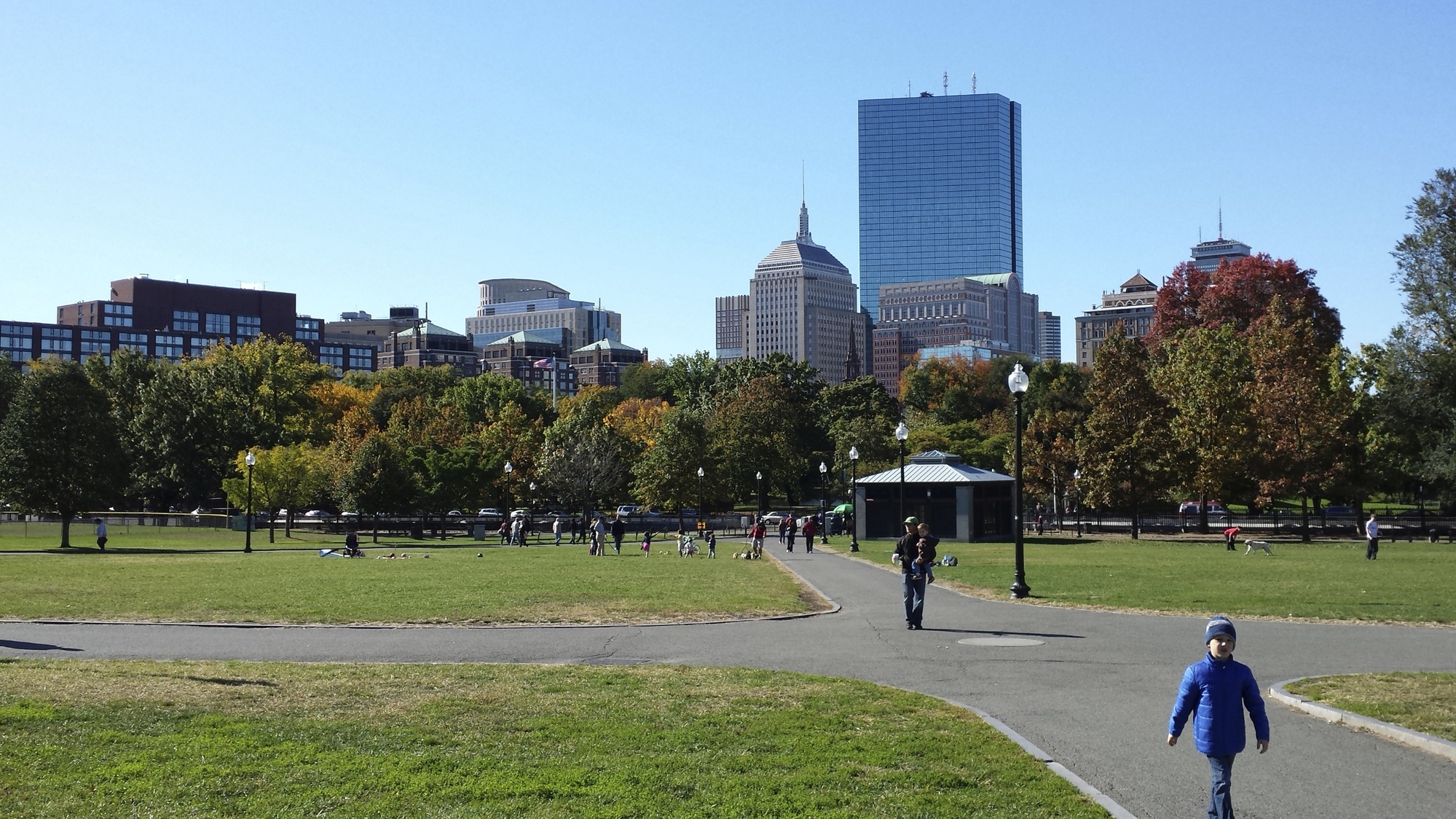
Window to the Soul: The World's Biggest Eye Contact Experiment
Before last Saturday, I thought that making sustained eye contact with strangers would make me feel a lot like that time I accidentally walked into a business-casual Harvard College Consulting Group party wearing my worst secondhand wool sweater: uncomfortable and itching to get out after thirty seconds.
I was wrong. Gazing into the eyes of the other participants in what Facebook promised would be the World’s Biggest Eye Contact Experiment, I felt surprisingly at ease.
This staring match took place by the Soldiers and Sailors Monument in Boston Common last Saturday. A sign invited passersby to find out “Where... The Human Connection [Has] Gone!” and to “Share One Minute of Eye Contact to Find Out!” Another sign commanded us to “Make a Human Connection With Your Eyes.”
I went in with a certain amount of trepidation. What would I Find Out? Where Has the Human Connection Gone?
On Saturday, I took the Red Line to the Common, empty-handed and a little nervous—only to find myself surrounded by smiling individuals with blankets, yoga mats, yoga blocks, and all of the other tools necessary to camp out for hours on slightly damp greenery. We arranged ourselves into an amorphous blob on the grass, waiting for strangers to sit down across from us—to face us and to share one minute of eye contact.
The event description on Facebook suggested that we “allow [ourselves] to be seen and calmly look into the eyes of the person in front of [us].” So 40 or so of us did sit, and were seen, and looked—with varying degrees of calmness—into other people’s eyes. Besides these terse instructions, we were free to structure our interactions however we wanted.
I had my first substantial interaction with a gray-haired woman who stood out because she looked more like your neighborhood soccer mom than the sun-kissed, youthful hippies I’d been expecting. I wish I could say that I chose her for the maternal twinkle in her eyes (they’re green—I can say this with some confidence), but it was really because she was sitting alone and toward the front of the crowd.
Her name was DeeDee and she was a grandmother of five. Her eye contact game was frighteningly strong. I locked gazes with her, sweating profusely in the blazing sun, and eventually—it felt like hours later—had to look away, my eyes burning from the end-of-summer brightness. It wasn’t a competition, but DeeDee had won.
Cowed by my defeat, I moved onto the next person. Participants didn’t seem to have much in common in terms of ethnicity or age, but we all shared a fervor for self-improvement.
I met Pia Moorland, who had come because she was “so used to looking at people’s faces” that she felt an old pro. Moorland is one of three thousand CODAs (children of deaf adults) in the United States. “It’s a culture in itself. You have one foot in one culture and one foot in another. You’re a member of the deaf world and the hearing world, and you’re always in the middle,” she told me.
After we had peered into the depths of each other’s souls for a minute, she told me I was “hard to read.” Her assessment has haunted me ever since: Am I an enigma, a modern-day Mona Lisa, or am I just your typical guarded, emotionless Harvard student? Food for thought.
I also learned some pro tips on how exactly to make eye contact. For example, you’ll soon realize that you can’t gaze into both eyes at the same time. Instead, you’ll have to choose one and focus on it. Nikoletta Kanakis, a tall young woman fresh from Burning Man, told me that the left eye is better, since “it’s closer to the heart.” She also informed me, in her calm, yoga teacher voice, that trying to look at both eyes is “like reading two pages at once—you just can’t do that.”
Making my way back to campus, I found that my eyes took forever to adjust to the harsh fluorescent lighting of the Red Line. But I was careful to avoid making eye contact with my fellow passengers: The rules are different down here, away from the sunshine and the smiling masses of the Common.


